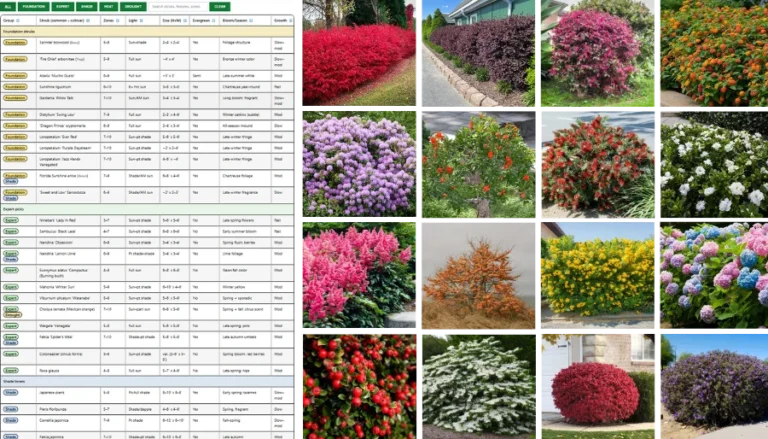Growing vegetables can be a rewarding experience, but choosing the right ones can make all the difference, especially if you’re starting out.
Fear not, because we’ve curated a list of the 31 easiest veggies to grow in any climate, perfect for both green thumbs and novice gardeners alike. These hardy crops adapt to various conditions and promise bountiful harvests.
Curious about which ancient vegetable was believed to be an aphrodisiac by the Romans? Or which veggie was once used as currency in Ancient Egypt? You’re about to find out.
Get ready to discover some fascinating facts, helpful growing tips, and the incredible benefits of each vegetable. Let’s dig in and turn your garden into a flourishing paradise with as little effort as possible (that’s just good time management)!
Anyone Can Grow These 31 Veggies
1. Radishes
Radishes are speed demons in the garden, often ready to harvest in just 3–4 weeks.
Interesting Fact: They were once grown in Ancient Egypt, even before the pyramids were built.
Best Time to Plant: Early spring and fall.
Health Benefits: Rich in vitamin C and potassium, radishes support immune function and heart health.
2. Lettuce
Lettuce is a cool-weather crop that can be harvested multiple times throughout the growing season.
Interesting Fact: The ancient Romans prized lettuce for its sleep-inducing properties.
Best Time to Plant: Early spring and fall.
Health Benefits: Packed with vitamins A and K, lettuce supports eye health and strong bones.
3. Green Beans
Green beans are prolific producers, making them a staple in many gardens.
Interesting Fact: They were cultivated by Native Americans long before European settlers arrived.
Best Time to Plant: Late spring.
Health Benefits: High in fiber and vitamins A and C, green beans support digestion and immune health.
4. Tomatoes
Tomatoes are the crown jewels of the vegetable garden, thriving in various climates.
Interesting Fact: Tomatoes were once believed to be poisonous and were called “wolf peaches.”
Best Time to Plant: Late spring, after the last frost.
Health Benefits: Rich in vitamins C and K, folate, and antioxidants, tomatoes support immune health and reduce inflammation.
5. Cucumbers
Cucumbers love warm weather and grow quickly, often yielding in about 50 days.
Interesting Fact: Cucumbers are 95% water, making them incredibly hydrating.
Best Time to Plant: Late spring.
Health Benefits: High in vitamins K and C, cucumbers help with hydration and skin health.
6. Zucchini
Zucchini is a prolific producer, often leaving gardeners with more than they know what to do with.
Interesting Fact: In Italy, zucchini is known as courgette.
Best Time to Plant: Late spring.
Health Benefits: Rich in vitamins A and C, zucchini promotes healthy skin and vision, while its high fiber content aids digestion.
7. Carrots
Carrots are root vegetables that come in a variety of colors beyond orange, including purple and yellow.
Interesting Fact: Carrots were first cultivated for their aromatic leaves and seeds, not their roots.
Best Time to Plant: Early spring and fall.
Health Benefits: High in beta-carotene, carrots support eye health and provide a good source of fiber.
8. Peas
Peas are cool-season crops that can be planted early in the spring.
Interesting Fact: Peas were one of the first crops cultivated by humans, dating back to 7000 BC.
Best Time to Plant: Early spring.
Health Benefits: Packed with protein, fiber, and vitamins A, C, and K, peas support overall health.
9. Spinach
Spinach is a nutrient-dense leafy green that grows best in cooler weather.
Interesting Fact: Spinach was first cultivated in Persia over 2,000 years ago.
Best Time to Plant: Early spring and fall.
Health Benefits: High in iron, calcium, and vitamins A and C, spinach is essential for strong bones and overall health.
10. Beets
Beets are root vegetables that also provide nutritious greens.
Interesting Fact: Beets were used as an aphrodisiac in ancient Rome. And now you know!
Best Time to Plant: Early spring and fall.
Health Benefits: Rich in folate, iron, and antioxidants, beets help improve blood flow and lower blood pressure.
11. Kale
Kale is a hardy green that can withstand frost, making it a versatile crop.
Interesting Fact: Kale was a staple food in Europe during the Middle Ages.
Best Time to Plant: Early spring and fall.
Health Benefits: High in vitamins K, A, and C, kale supports bone health, vision, and the immune system.
12. Swiss Chard
Swiss chard is a colorful leafy green that can be harvested multiple times.
Interesting Fact: Swiss chard is a variety of beet grown for its leaves rather than its roots.
Best Time to Plant: Early spring and fall.
Health Benefits: Rich in vitamins K, A, and C, Swiss chard helps maintain strong bones and healthy skin.
13. Potatoes
Potatoes are a versatile staple crop that can grow in various climates.
Interesting Fact: Potatoes were first domesticated in the Andes mountains of South America over 7,000 years ago.
Best Time to Plant: Early spring.
Health Benefits: High in potassium and vitamin C, potatoes support heart health and immune function.
14. Peppers
Peppers, whether sweet or hot, are warm-weather crops that add vibrant colors to the garden.
Interesting Fact: Christopher Columbus brought peppers back to Europe from the New World.
Best Time to Plant: Late spring.
Health Benefits: Packed with vitamins A and C, peppers boost immune function and improve eye health.
15. Onions
Onions are bulb vegetables that store well, making them a kitchen staple.
Interesting Fact: Onions have been used as currency in Ancient Egypt.
Best Time to Plant: Early spring or fall.
Health Benefits: Rich in antioxidants and vitamin C, onions help boost the immune system and improve heart health.
16. Garlic
Garlic is a hardy bulb that’s easy to grow and stores well.
Interesting Fact: Garlic was worshiped by ancient Egyptians and used as currency.
Best Time to Plant: Fall.
Health Benefits: Garlic is packed with allicin, which has potent medicinal properties, including anti-inflammatory and immune-boosting effects.
17. Cabbage
Cabbage is a cool-season crop that stores well after harvest.
Interesting Fact: Cabbage was used by ancient Greeks and Romans as a cure for hangovers.
Best Time to Plant: Early spring and fall.
Health Benefits: High in vitamins K and C, cabbage supports bone health and immune function.
18. Broccoli
Broccoli is a nutrient-packed vegetable that prefers cooler temperatures.
Interesting Fact: Broccoli was developed from wild cabbage in the Mediterranean.
Best Time to Plant: Early spring and fall.
Health Benefits: Rich in vitamins C and K, and folate, broccoli supports immune health and cell growth.
19. Cauliflower
Cauliflower is a versatile vegetable that can be grown in a variety of climates.
Interesting Fact: Cauliflower is actually a flower that hasn’t yet fully developed.
Best Time to Plant: Early spring and fall.
Health Benefits: High in fiber and vitamins C and K, cauliflower supports digestion and bone health.
20. Turnips
Turnips are root vegetables that can be eaten raw or cooked.
Interesting Fact: Turnips were a staple food before potatoes became popular in Europe.
Best Time to Plant: Early spring and fall.
Health Benefits: Rich in vitamins C and B6, and fiber, turnips support immune function and digestion.
21. Brussels Sprouts
Brussels sprouts are small, cabbage-like vegetables that thrive in cool weather.
Interesting Fact: They were first cultivated in Belgium in the 16th century.
Best Time to Plant: Early spring and fall.
Health Benefits: High in vitamins K and C, Brussels sprouts support bone health and immune function.
22. Celery
Celery is a cool-season crop that adds a refreshing crunch to salads and soups.
Interesting Fact: Celery was considered a medicinal plant in Ancient Greece.
Best Time to Plant: Early spring and fall.
Health Benefits: Low in calories but high in vitamins K and C, celery supports bone health and immune function.
23. Radicchio
Radicchio is a type of chicory with a bitter, spicy flavor.
Interesting Fact: Radicchio has been cultivated since ancient Roman times.
Best Time to Plant: Early spring and fall.
Health Benefits: Rich in antioxidants and vitamins K and C, radicchio supports immune function and reduces inflammation.
24. Arugula
Arugula is a fast-growing leafy green with a peppery flavor.
Interesting Fact: Arugula was a favorite of the Romans, who believed it to be an aphrodisiac.
Best Time to Plant: Early spring and fall.
Health Benefits: High in vitamins A and K, arugula supports eye health and strong bones.
25. Parsley
Parsley is a versatile herb that can be grown in various climates.
Interesting Fact: Ancient Greeks used parsley as a symbol of death and rebirth.
Best Time to Plant: Early spring and fall.
Health Benefits: Rich in vitamins A, C, and K, parsley supports immune function and bone health.
26. Bok Choy
Bok choy is a type of Chinese cabbage that’s easy to grow and quick to harvest.
Interesting Fact: Bok choy has been cultivated in China for over 1,500 years.
Best Time to Plant: Early spring and fall.
Health Benefits: High in vitamins A, C, and K, bok choy supports eye health, immune function, and strong bones.
27. Mustard Greens
Mustard greens are fast-growing leafy greens with a spicy kick.
Interesting Fact: Mustard greens have been cultivated for over 5,000 years in Asia.
Best Time to Plant: Early spring and fall.
Health Benefits: Rich in vitamins K, A, and C, mustard greens promote healthy skin and bones and boost the immune system.
28. Kohlrabi
Kohlrabi, also known as German turnip, has a unique, bulbous stem.
Interesting Fact: Kohlrabi was developed in Europe around 500 years ago.
Best Time to Plant: Early spring and fall.
Health Benefits: High in vitamin C and fiber, kohlrabi supports immune function and digestive health.
29. Leeks
Leeks are part of the onion family and have a milder, sweeter flavor.
Interesting Fact: Leeks were a favorite vegetable of the ancient Egyptians.
Best Time to Plant: Early spring and fall.
Health Benefits: Rich in vitamins A and K, leeks support eye health and bone health.
30. Rutabagas
Rutabagas are root vegetables that are a cross between turnips and cabbage.
Interesting Fact: Rutabagas are known as “Swedes” in many parts of the world.
Best Time to Plant: Early spring and fall.
Health Benefits: High in vitamins C and E, rutabagas support immune function and skin health.
31. Fennel
Fennel is a versatile plant that produces flavorful seeds, bulbs, and fronds.
Interesting Fact: Fennel was used as a medicinal herb in Ancient Greece and Rome.
Best Time to Plant: Early spring and fall.
Health Benefits: High in fiber and vitamin C, fennel supports digestive health and immune function.
More To Discover
Final Thoughts
Now you know 31 of the easiest vegetables to grow in any climate. With these resilient crops, you can turn even the most unpredictable weather into a thriving, productive garden. Imagine the satisfaction of plucking fresh veggies from your backyard, knowing they’ve thrived despite any climatic challenges.
These vegetables not only provide a bounty of delicious and nutritious produce, but they also contribute to a sustainable and self-sufficient lifestyle.
Whether you’re a seasoned gardener or a complete newbie, these easy-to-grow veggies will keep you and your garden happy and healthy.
Remember, gardening isn’t just about the result; it’s also about having an excuse to avoid your family and enjoy some alone time. Embrace the dirt, the sun, and the occasional mishap. Your garden is a living testament to your dedication, and with these hardy vegetables, it’s bound to flourish.

















